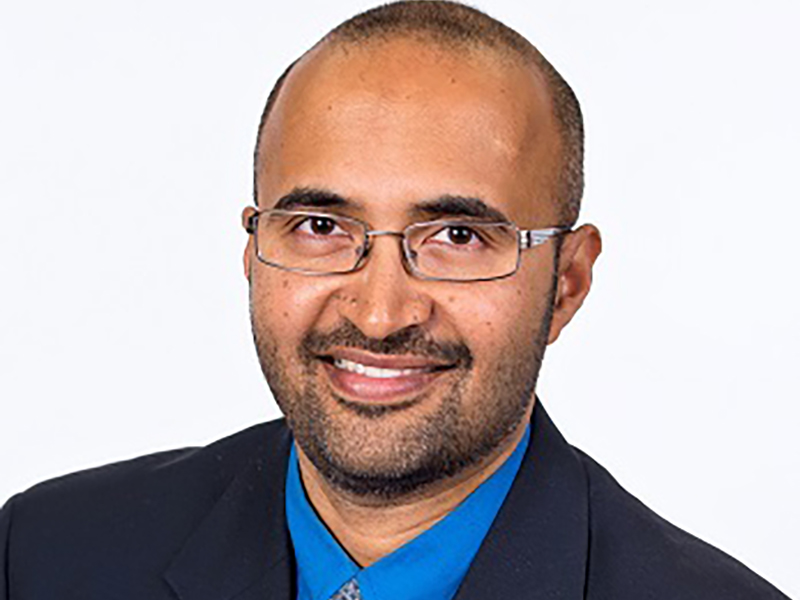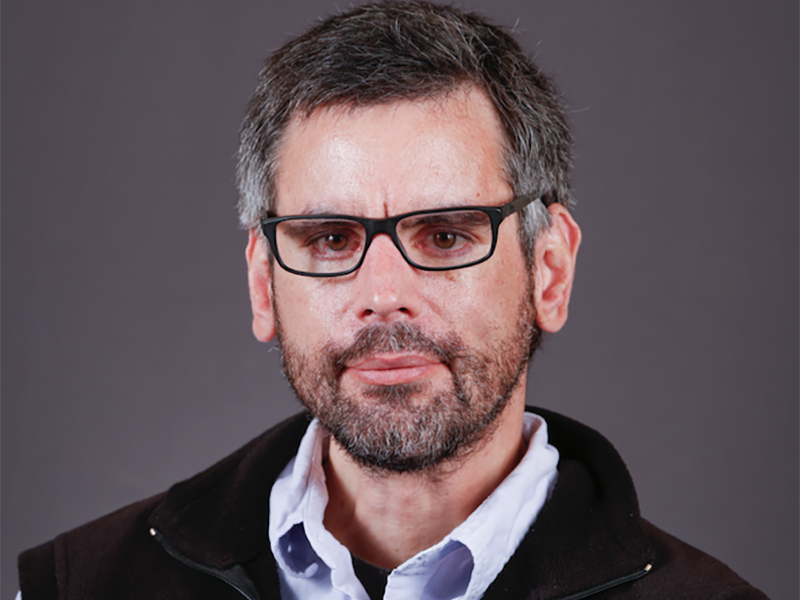
Dr. Vinod Namboodiri
Navigating around a city or inside a building isn’t always as simple as tapping on the Google Maps app. For some people with disabilities, it can be nearly impossible. Dr. Vinod Namboodiri, professor of electrical engineering and computer science at Wichita State University, is building an infrastructure to make getting around a bit easier.
The National Science Foundation (NSF) has awarded more than $1.1 million to Namboodiri and his team to create a community-wide wayfinding system for people with disabilities. he team includes Dr. Nils Hakansson, associate professor of biomedical engineering, and researchers from Kansas State University, Texas A&M University, the Envision Research Institute, and the City of Wichita.
For most, GPS is an adequate tool to help people find their way around. But GPS doesn’t give guidance inside buildings, nor does it indicate where a wheelchair entrance or elevator might be located. For people with disabilities, this is vital information.
“What this this project is doing,” Namboodiri said, “is trying to build a location infrastructure to provide people as they navigate, whether they are indoors or outdoors, complementing something like GPS.”
The team, led by Namboodiri, includes Dr. Nils Hakansson, associate professor of biomedical engineering, and researchers from Kansas State University, Texas A&M University, the Envision Research Institute, and the City of Wichita. The project is a three-year collaborative effort funded through the NSF’s Smart & Connected Communities program.

Dr. Nils Hakansson
According to the NSF abstract, “This project attempts to use a common technology infrastructure to simultaneously serve the auxiliary wayfinding needs of people with a broad range of disabilities. The top-level goal of using technology to improve accessibility in communities naturally requires integrative socio-technical research contributions that advances knowledge on multiple fronts.”
The system will be twofold: First, wireless devices will need to be embedded into the environment and buildings. Those devices will then communicate to the second part of the infrastructure: the mobile app known as CityGuide that Namboodiri and his team are creating. The initial system has three goals:
- To help people with emergency evacuation from indoor environments
- To connect with a caregiver or family member for remote assistance
- To assist with navigating transit systems
While there are several mapping apps, Namboodiri said, “GPS does a lot of the things, but it doesn't work indoors, and it’s not always accurate. This is supposed to help fill that gap for whatever GPS cannot do in terms of location services.”
The CityGuide assistive technology system is not just for people who are visually impaired.
“Somebody with a wheelchair may approach a building from the outside and may want to know where the ramps are or where the elevator is so located,” he said. “That information is always useful, and it's more important for a person with a disability because it cuts down their challenges of getting around.”
It could even help people with non-physical disabilities.
“Somebody who has memory loss might leave their home and take a path and they don't remember what path they took,” Namboodiri said. “This is an app that tells you the path you need to take to go back home, turn by turn.”
“This project by Drs. Namboodiri and Hakansson and their collaborators is perfect example of how the converging of multiple disciplines is needed to solve complex societal needs,” said Dr. Coleen Pugh, vice president for research and economic development at Wichita State. “The results of this research will open the worlds of members of our society with range of physical challenges, including those of the researchers themselves.”
The idea for the CityGuide system was borne from Namboodiri’s own challenges.
“Due to a retinal condition, my vision is impaired (beyond normal levels) in some lighting situations, including at night” he said. “Thus, I always had an interest in trying to solve, or at least reduce the barriers, posed by medically unsolvable challenges faced by persons with disabilities utilizing my background in engineering and computing. The right moment came when Envision created a new research institute called the Envision Research Institute focused on solving challenges posed by visual impairments through research. I decided to spend a semester with them in 2016 during a sabbatical and things kicked on from there.”
Namboodiri said a few other people on the team also deal with different mobility barriers, including his fellow Wichita State faculty member and CityGuide teammate Dr. Hakansson, who uses a wheelchair.
“A lot of us had personal experiences, and we wanted to kind of make society better in these kinds of situations,” Namboodiri said. “It just happened that we were able to come up with a good idea, brought together the right people, and NSF thankfully supported it after seeing some good preliminary work come out of a prior planning grant.”

